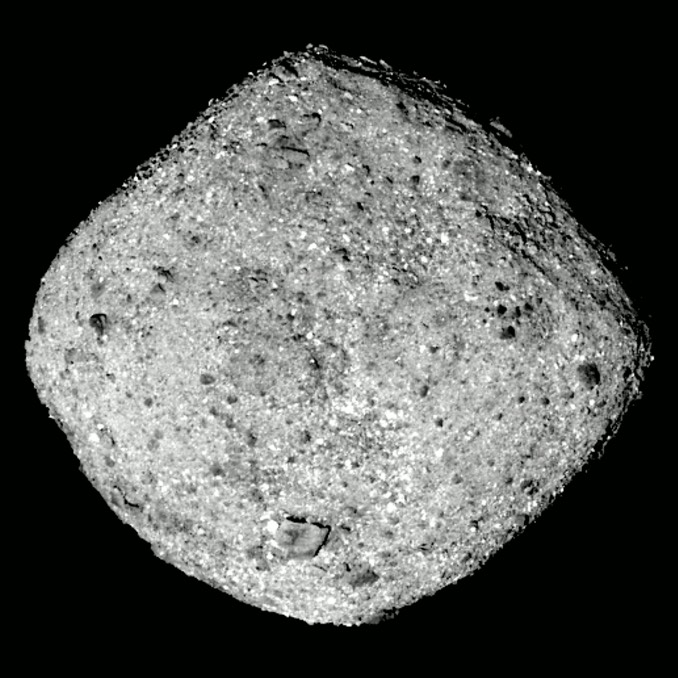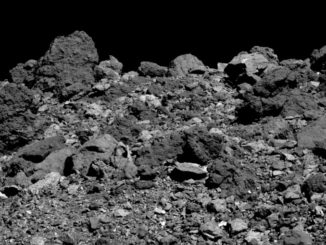
On New Year’s Eve, while many scientists, engineers and space enthusiasts focused on NASA’s New Horizons probe as it raced toward Ultima Thule in the remote Kuiper Belt, another team of flight controllers was carrying out its own record-breaking manoeuvre closer to home: guiding the OSIRIS-REx spacecraft into orbit around a tiny asteroid named Bennu.
At 7:43 UTC on 31 December, 112 million kilometres (70 million miles) from Earth, OSIRIS-REx executed an eight-second thruster firing that allowed the spacecraft to be captured by Bennu’s minuscule gravity, just five millionths as strong as Earth’s. The resulting 62-hour orbit carries the spacecraft within 1.75 kilometres (about 1 mile) of the asteroid’s centre.
Bennu is the smallest body ever orbited by a spacecraft. It resembles a somewhat tetrahedron-shaped rubble pile measuring about 510 metres (1,673 feet) across from pole to pole. For comparison, there are currently nine skyscrapers around the world that are taller than the asteroid’s polar width.
The $1 billion OSIRIS-REx mission was launched in September 2016 and reached reached Bennu’s immediate vicinity on 3 December. After exhaustive observations from orbit later this year, the spacecraft will move in to touch the asteroid’s surface in the summer of 2020, using a device on the end of its robot arm to collet soil and rock samples for return to Earth.
Even though OSIRIS-REx is now in orbit, Bennu’s gravitational pull is so tenuous additional thruster firings will be required to maintain the spacecraft’s trajectory and counteract solar radiation and thermal pressure from the asteroid’s surface that otherwise would push it off course.
“Our orbit design is highly dependent on Bennu’s physical properties, such as its mass and gravity field, which we didn’t know before we arrived,” said Mike Moreau, OSIRIS-REx’s flight dynamics system manager at NASA’s Goddard Space Flight Center.
“Up until now, we had to account for a wide variety of possible scenarios in our computer simulations to make sure we could safely navigate the spacecraft so close to Bennu. As the team learned more about the asteroid, we incorporated new information to hone in on the final orbit design.”
Starting in February, OSIRIS-REx will carry out a sequence of close flybys of Bennu to take high-resolution images of the asteroid’s surface to help scientists select a sample collection site. Then, in the summer of 2020, the spacecraft will briefly touch the surface of Bennu to retrieve a sample that will be returned to Earth in September 2023.
Getting OSIRIS-REx safely into orbit “continued our long string of successes,” said Dante Lauretta, the mission’s principal investigator at the University of Arizona. “With the navigation campaign coming to an end, we are looking forward to the scientific mapping and sample site selection phase of the mission.”



